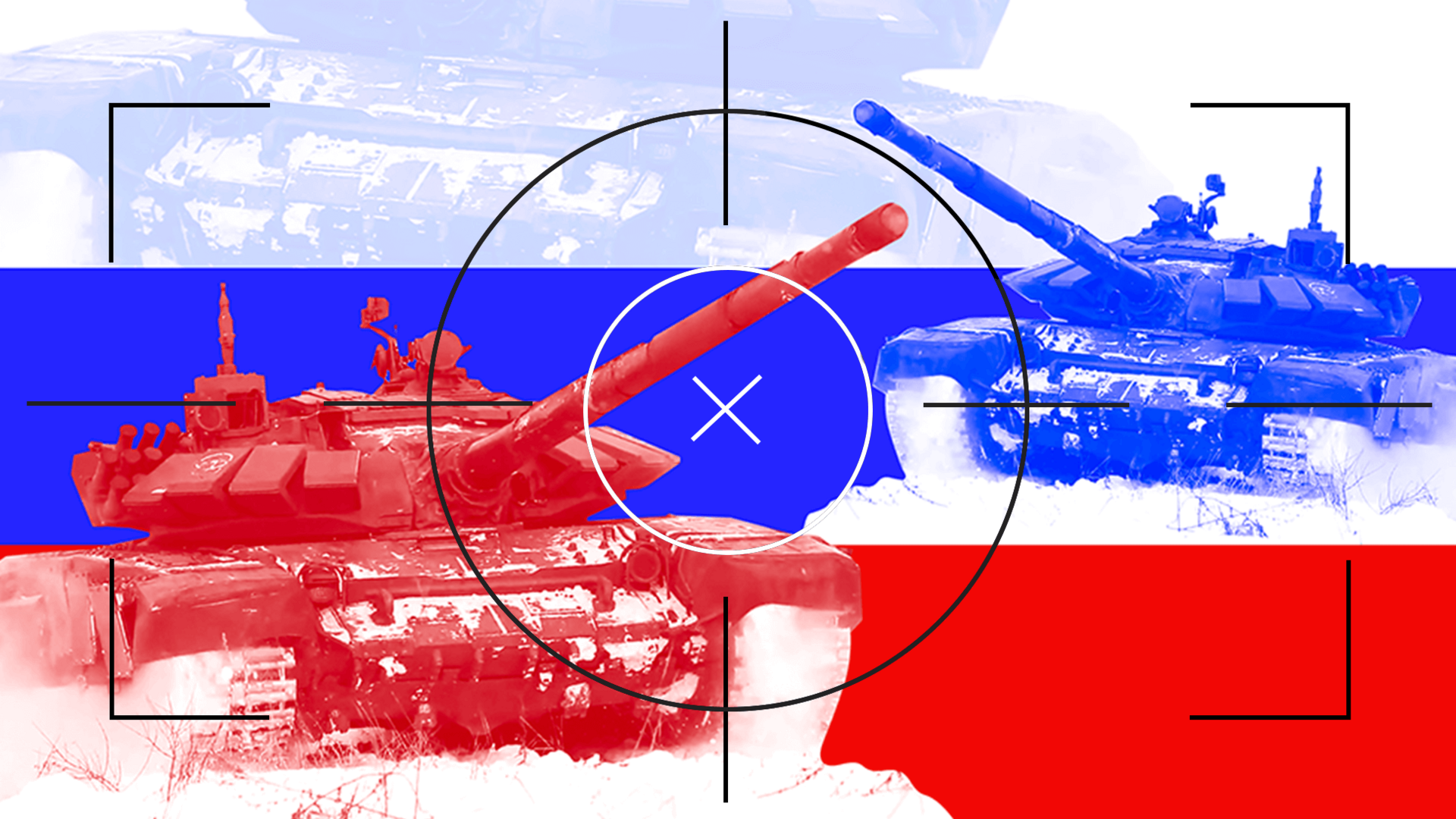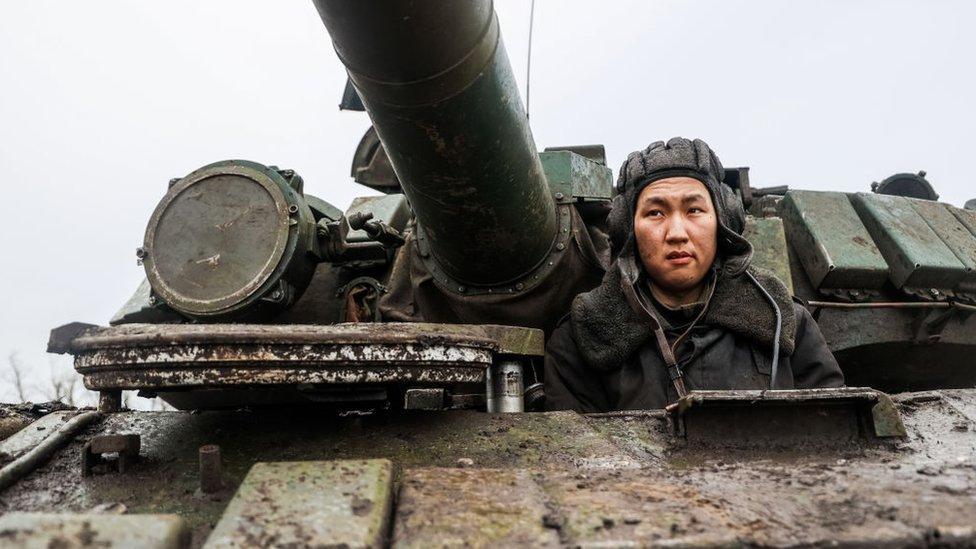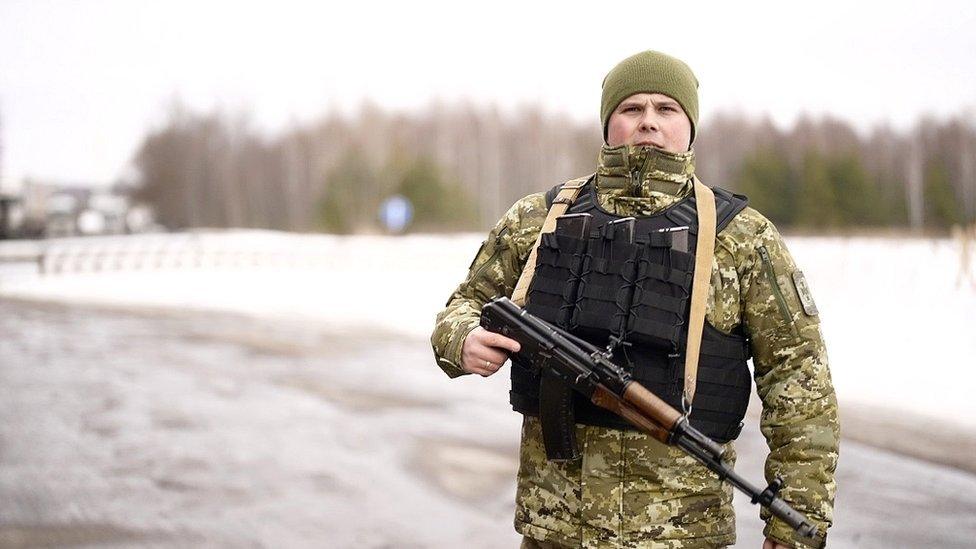Ukraine: What are Russia's possible attack routes?
- Published

Russia has ordered its troops into east Ukraine, but western governments believe Moscow may be planning a much bigger invasion, to take over the whole country.
The UK Prime Minister Boris Johnson has said: "We think they have a huge preparation ready to go.
"Everybody can see what the potential routes in are."
Military analysts agree that with up to 190,000 troops near the Ukraine border, Russia has a range of options, should it decide to strike.
A strike from the east
Russian president Vladimir Putin has recognised two Russian-backed regions in east Ukraine, the self-styled Donetsk People's Republic and the Luhansk People's Republic, as independent states.
He has ordered troops into the two regions to "maintain peace".
If Mr Putin decides his troops should go further than the two regions, they may head for Dnipro and Zaporizhzhia, according to Seth Jones, external of the Center for Strategic and International Studies.
An advance through Melitopol to the south would create a land bridge between Rostov in Russia and Crimea, which Russia annexed in 2014.

Russia could also strike from Belgorod, where thousands of troops have been gathering for months. From there, the cities of Kharkiv and Kremenchuk are likely targets.
Ben Barry of the International Institute for Strategic Studies says a ground war would involve "powerful armoured columns with concentrated artillery support to attempt to advance fast into the depth of Ukraine".
He says even a limited operation in the east could involve the bombing of air defences and other key military command infrastructures elsewhere in the country.

Troops have been taking part in exercises near Rostov-on-Don
A Russian strike from the east might be helped by Russian-backed separatists in Donetsk and Luhansk.
They are thought to number about 15,000. Ukraine says the number is higher.
The Belarus option
If Russia's goal is full regime change in Ukraine, an assault from the north is highly possible, according to Michael Kofman, of the US-based Center for Naval Analyses (CNA).

Russia has 30,000 troops in Belarus for extended joint military exercises, equipped with Iskander short-range missiles and a number of rocket launchers, as well as Su-25 ground attack aircraft and Su-35 fighters.
On Sunday, Mr Johnson said that he had seen intelligence suggesting that Russia was planning an attack from Belarus.
He said it would see a Russian advance "coming down from the north, coming down from Belarus, and encircling Kiev itself".
The exercises in Belarus have been extended indefinitely.

To the east, just inside Russian territory, "Russia's entire 41st army is waiting on the border", says Mr Kofman.
An advance on Kyiv from Belarus may avoid the exclusion zone around the Chernobyl nuclear power plant.
On the Russian side, it could come from Novye Yurkovichi and Troebortno, according to Mr Jones.
The route from Crimea
A breakout from Crimea is "almost certain" if Russia launches an invasion, according to Mr Barry, a former British military planner.
A Russian advance towards Kyiv from Crimea could strand large numbers of Ukrainian troops east of the Dnieper river, he says.
With Russian forces to their west, east and north, and in Crimea, Ukrainian troops would be encircled.

Russian troops may try to take Kherson and Odesa to their west and Melitopol and Mariupol to the east - another option for creating a land bridge between Crimea and western Russia.

An advance from Crimea could also involve naval forces currently in the Black Sea.
Russian landing ships in the area are capable of deploying personnel, armoured vehicles and main battle tanks.
Analysts emphasise that it's possible that any Russian advance could involve a number of routes simultaneously, allied to cyber-attacks, disinformation warfare and missile strikes.
They say Russia's most limited option might be to launch significant cyber-attacks on Ukraine, aiming to paralyse key infrastructure without taking territory.
Mr Kofman believes Russia has "maximalist aims" and is highly likely to strike deep into Ukraine.
But in the end, says Mr Kofman, the exact details of any attack will depend on Moscow's political objectives.
And they remain unclear.
Graphics by Prina Shah and Zoe Bartholomew.
Related topics
- Published23 February 2022

- Published17 February 2022
